And in the post you can enjoy homemade delicious pastries. I share with you a universal recipe for lean yeast-free dough without eggs and butter. From it you can bake buns, pizzas, rolls, pies with various fillings - for example, delicious cabbage pie, which we will make today.

Ingredients for cabbage pie on lean dough
For yeast dough
- 20 g of fresh yeast;
- 1 tbsp. l sugar (if the filling is sweet, then 3 tablespoons);
- 0, 5 tsp. salts;
- 1 tbsp. warm water;
- 1, 5 - 2 tbsp. l sunflower oil;
- Approximately 3 tbsp. flour.
For cabbage filling
- 1/2 small or 1/4 large head of white cabbage;
- 1-2 medium carrots;
- 1 medium bulb;
- Salt, pepper;
- Vegetable oil;
- Tomato paste - at will.
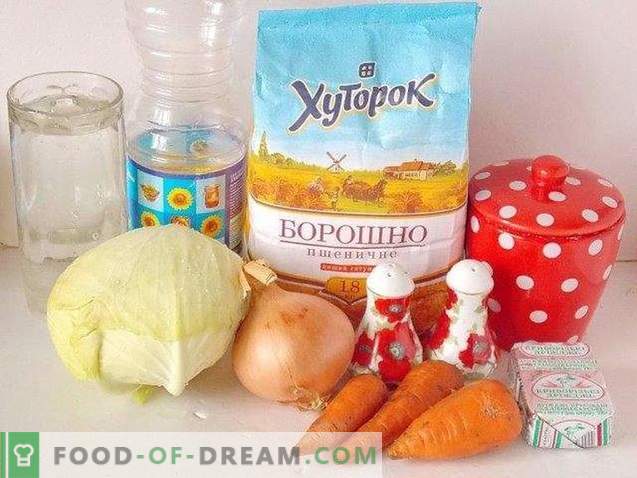
Recipe for cabbage pie on lean dough
First, we make a test dough. Crumble the yeast in a bowl, add sugar, rub with a spoon, and when the sugar grains and yeast melt, pour in a glass of water (not hot, but warm, about 37ºC - this temperature is the most comfortable for the yeast, and the dough will rise well).

After stirring the yeast with water, sift into a bowl a little less than a glass of flour and mix well to make a thin dough without lumps.
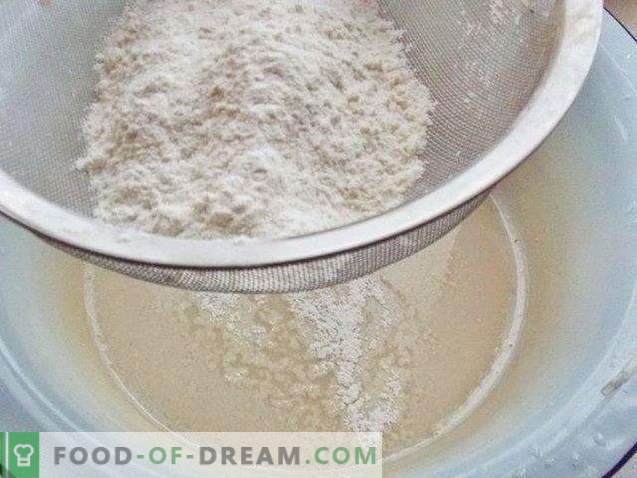
We put the bowl with the boil in the heat - for example, on top of another bowl, larger, in which warm water is poured. Cover with a clean towel, leave for 15 minutes.
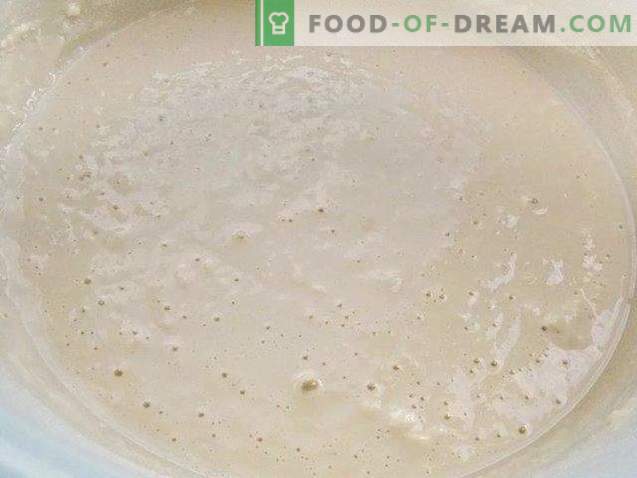
In the meantime, let's do cooking cabbage filling. We clean the carrots and onions, remove the top leaves from the cabbage, wash the vegetables.
Chop the onion and pour it into the pan with heated vegetable oil. Fry, stirring, over medium heat for a couple of minutes, then pour the carrot, grated on a large grater. Again, stir and continue to fry for another 2-3 minutes, in parallel with this thin shred cabbage.
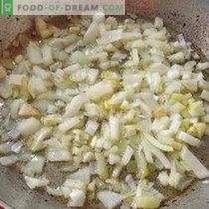

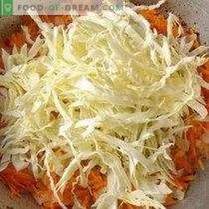
After adding the cabbage to the carrots and onions, mix well, reduce the heat and cover the pan with a lid - let the filling stew until soft. Do not forget to stir, so that the cabbage is stewed evenly and does not burn the bottom. Shortly before the readiness, salt the stuffing, pepper, you can put a couple of spoons of tomato paste - for color and taste: the tomato gives a slight sourness.
Put the cooked cabbage into a wide plate to cool it - you can’t fill the yeast pie hot: as you already know, yeast loves heat. Therefore, the filling should be not only fresh from the pan, but not from the refrigerator, but slightly warm or at room temperature.
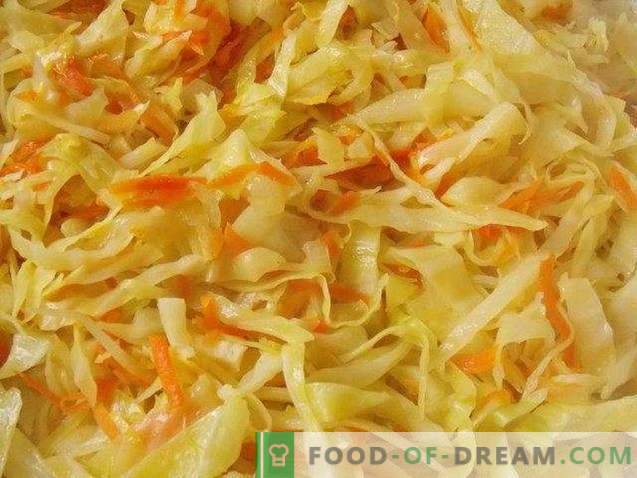
While the filling cools, knead the dough. Opara has already approached, having doubled. Mix it and add the rest half a cup of warm water, then gradually sift the remaining flour, mixing the dough. Along with the last portion of flour, add salt and pour in vegetable oil.
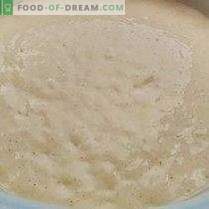
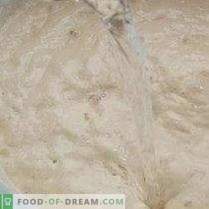
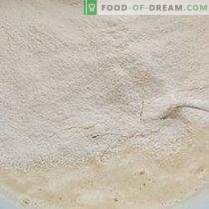
Put aside the spoon and continue to knead the dough with your hands - in a bowl or on a table, sprinkle it with flour. The better you knead, the better the baking will be - even lean dough without eggs and butter will turn out lush and tasty. If the dough sticks to your hands, you can pour a little bit of flour, and it is better to add a little more vegetable oil so that the dough is not too steep.
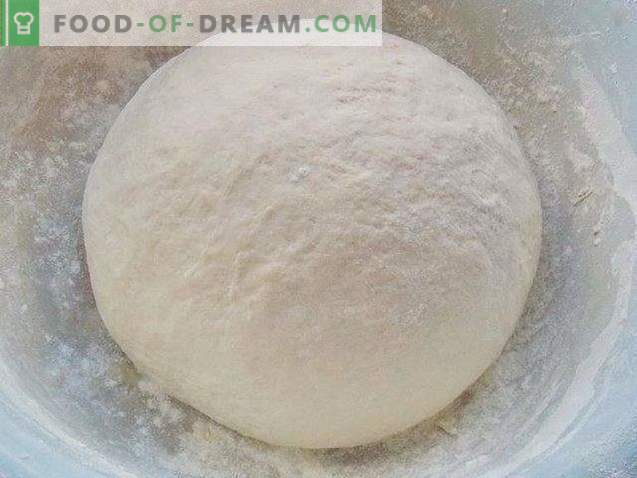
We put the dough in a bowl, sprinkled with flour or greased with vegetable oil, and again, covered with a towel, put in a warm water bath for 15-20 minutes.
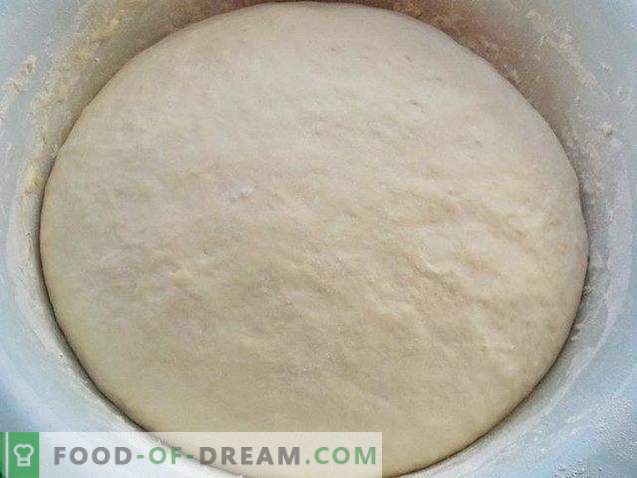
When the dough comes up, having increased one and a half to two times, gently wring it with our hands and divide it into two parts, about 2/3 and 1/3.
Most of the roll in a circle about 1 cm thick and a few centimeters in diameter more than your shape. To prevent the dough from sticking, sprinkle flour on the table.
Put the rolled out dough in the form, greased with vegetable oil or covered with oiled parchment for baking. You can take the form of cast iron skillet instead. Or make the cake not round, but rectangular, and bake it on a baking sheet. With the shape of the cake and its decoration, you can fantasize as you like.
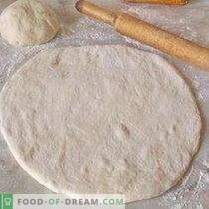
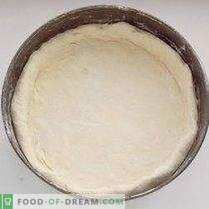
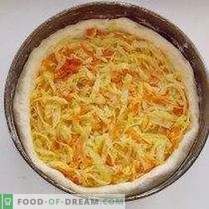
Put the cabbage filling on the cake and distribute it evenly. Slightly bend inside the edge of the dough.
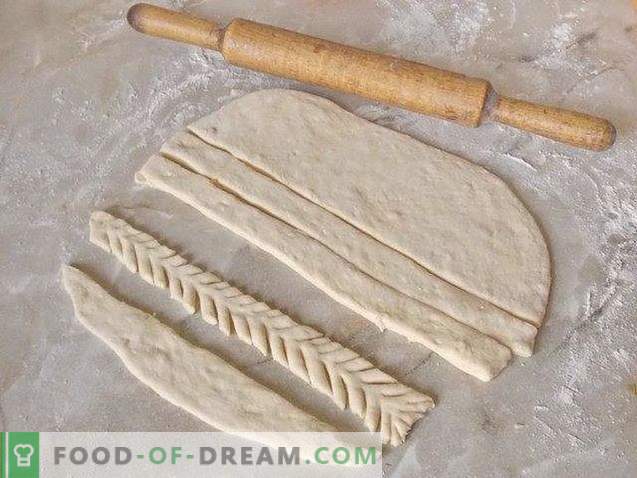
We also roll out a smaller part of the dough and make decorations for our cake. You can cut the dough into strips and turn them into beautiful “spikelets” that are laid on the cake, interlacing in the form of a “lattice”. From small pieces of dough to form roses and leaves, and arrange the top of the cake.
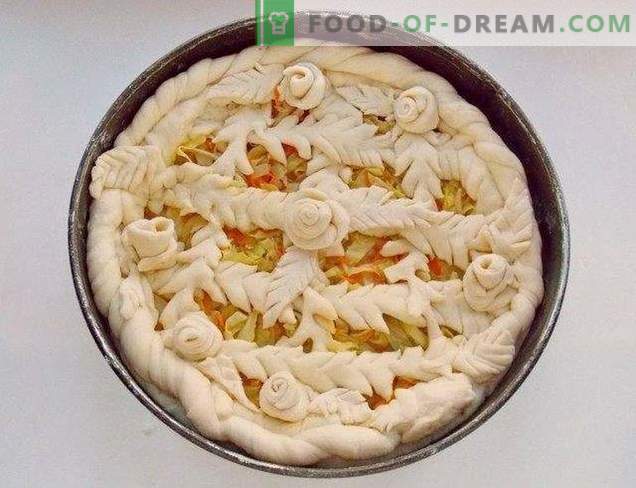
It's time to turn on the oven, let it warm to 180ºC. The form with the cake can be put on top of the stove so that it is slightly infused in heat. Then put the cake in the oven and bake at 180-200ºC for 20-25 minutes. Carefully look in and try a wooden stick: if the dough is already dry and the crust is “grabbed,” then the cake is almost ready.
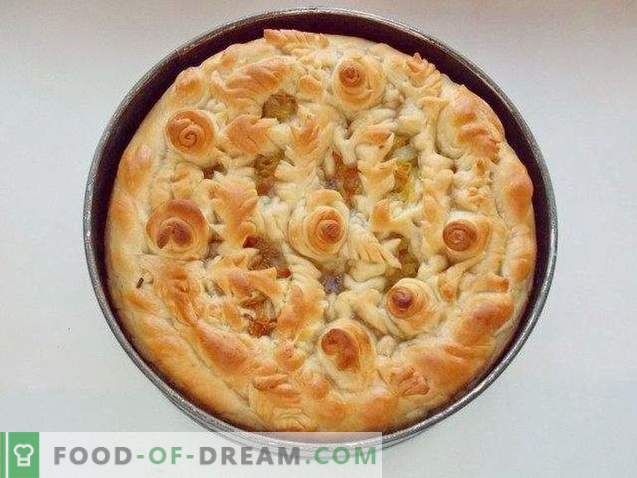
How to smear the cake so that it becomes rosy? The classic version is a beaten egg. But, since our cake is lean, I suggest we grease its top with very sweet strong tea (for half a cup of tea leaves - 1-1,5 tablespoons of sugar). Brush the cake with a brush, put it in the oven again and add fire. In 5-7 minutes the pie will turn red beautifully!
We take it out, let it cool a little, and then gently remove it from the mold and shift it onto the dish.
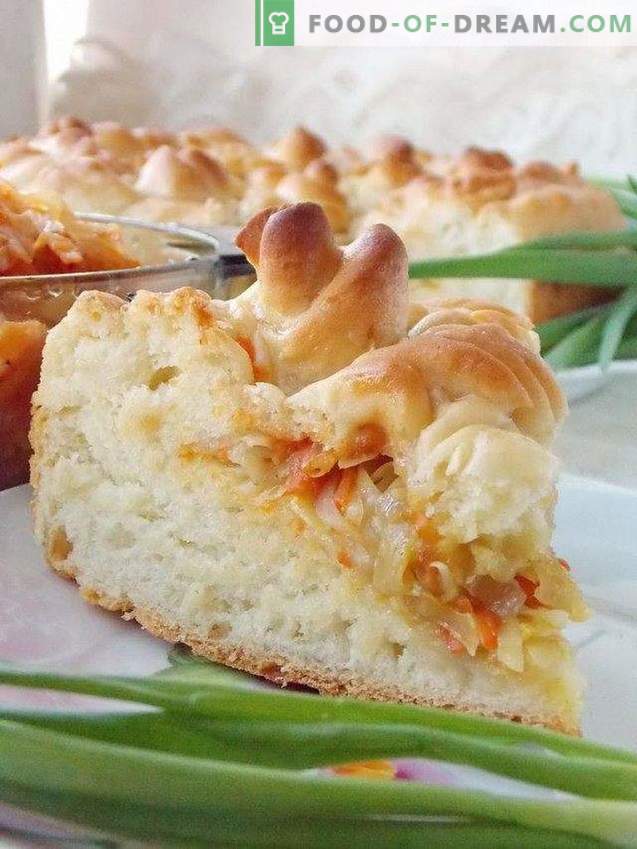
If the upper crust of the cake is too hard, cover it with a towel and let it cool down. If the crust is hard below, you can put the form on a wet towel (be careful with steam!).
Cut the slightly cooled cake into pieces and try.

You can vary the amount of filling and thickness of the dough according to your preferences. Who loves the cake, nourishing and lush, like bread, and who likes when the layer of dough is thin, and the fillings are many.
You can bake the same lean yeast cake not only with cabbage, but also with mushrooms, greens, peas, pumpkin, apples.













